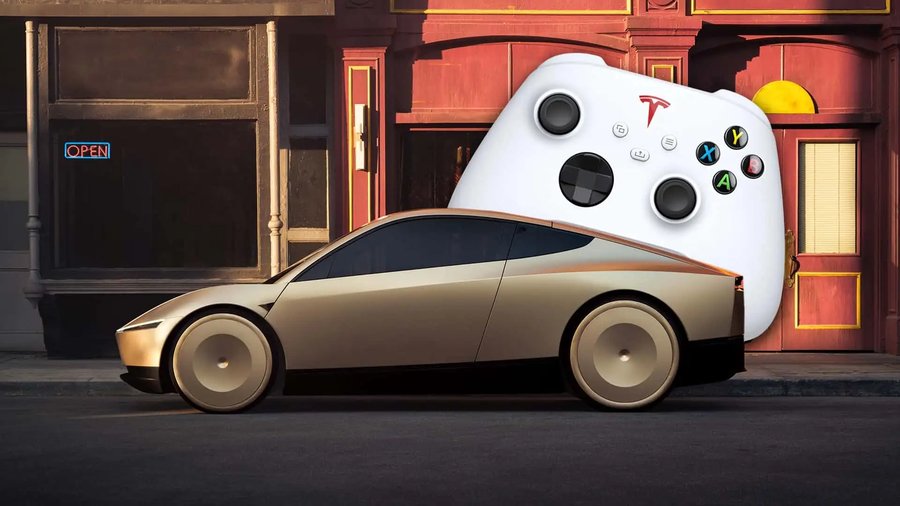Tesla’s CyberCab Can Be Driven With An Xbox-Like Controller: Report

Tesla's Cybercab has no steering wheel or pedals. A recent video from the Petersen Museum seemed like someone was controlling the Cybercab from the front seat. Sources tell one news outlet that Tesla has build the Cybercab to work with an Xbox-like video game controller.
The Tesla Cybercab shocked the world when it made its first appearance without any form of traditional driver controls. We're talking about no steering wheel, no pedals—nothing for someone in the front seat to put their hands (or feet) on to control the car or override the software. It turns out that Tesla's workaround is to pilot the car like a video game, literally.
That small tidbit comes from a report by AutoEvolution which has some sources at the Petersen Museum where the Cybercab is on display until the new year. According to the report, Tesla's super secret method is a small Xbox-like game controller that plugs into the car to control steering and pedal input since, you know, there's no other hardware installed in the car that can do this.
Cybercab controls recently came into question after the Petersen Museum recently showed some behind-the-scenes footage of the Cybercab arriving at its facility. In the video (embedded above), the car can be seen working its way up a ramp with someone in the front seat. People speculated that someone was sitting in the seat to maneuver the car, especially since it was unlikely that Tesla's FSD software could figure out how to navigate inside a building.
It turns out they were right.
AutoEvolution says that its sources confirm this method was used to control the car while it was inside of the museum. The sources also confirmed that the car could be controlled wirelessly from outside (like a big RC car).
We also know that Tesla is working to hire a fleet of robotaxi operators. These teleoperators will work as safety operators when the automaker launches its first company-run fleet—presumably before 2027—although it has a number of kinks to work out first. These operators will likely control the vehicle remotely to remediate safety or navigation problems that the Robotaxis are unable to overcome on their own, similar to how Waymo uses remote operators when it is unsure of how to handle a situation (for example, confirming which lane is blocked by cones so it doesn't get caught in wet cement).
The automaker must also figure out how it plans to launch the service, including the tough human side of the business like vehicle cleaning and maintenance. General Motors recently bowed out of this side of the business after determining the amount of capital it would take for Cruise to launch and maintain its service. Tesla also needs to decide where it will first launch the service, though recent reports indicate that Tesla has its eyes on Texas due to the lack of regulation around autonomous vehicles.
All of that being said, keep in mind that Tesla intends to make these cars available for the general public to purchase. That means these are issues that the public—whether operating their own fleet or personally owned robotaxi—will need to overcome as well. Will the public have their own Tesla controller at the ready in case their car does something unexpected, or if they need to pilot it outside of the operational design domain? With the current state of the Federal Motor Vehicle Safety Standards, things will have to change before a controller-controlled car can hit the streets. But given Musk's close-knit ties to the president-elect, anything is possible.
Related News
